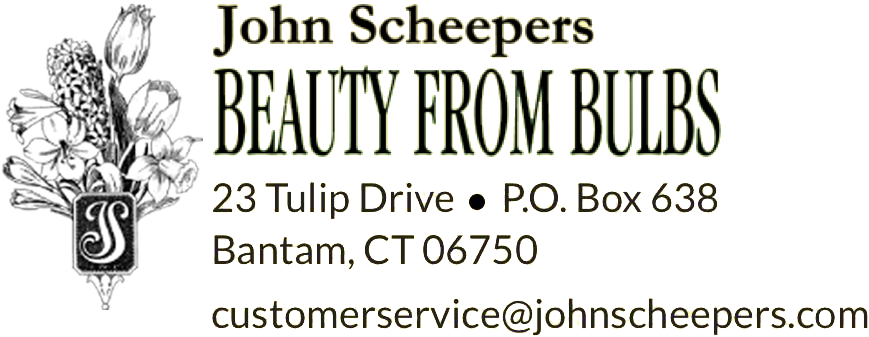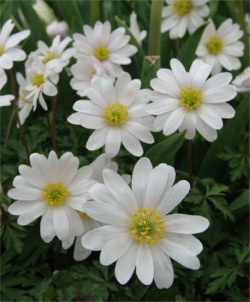 Planting Tools
Planting Tools
There are many different bulb planting tools from which to choose. One's personal selection should be based on physical ease of use, the size of the bulb to be planted, and perhaps most importantly, the actual characteristics of the planting site.
If flower bulbs are to be planted in well-prepared garden beds, virtually any tool can be used that is comfortable. You may refer to our sections on Soil Good for Flower Bulbs and Planting Site Requirements.
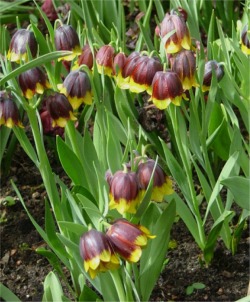 One may choose from slender hand-held trowels or bulb dibbles for small bulbs measuring 3 to 7 centimeters in circumference. The bulb dibble, or dibber, is good for planting varieties including some Allium, Anemone blanda, Brodaiea, Chionodoxa, Corydalis solida, some Crocus, Eranthis, some Fritillaria, Galanthus, Gladiolus communis ssp byzantinus, Ipheion, Ixiolirion, some Muscari, Rock Garden Iris, small Ornithogalum, Puschkinia and some Scilla.
One may choose from slender hand-held trowels or bulb dibbles for small bulbs measuring 3 to 7 centimeters in circumference. The bulb dibble, or dibber, is good for planting varieties including some Allium, Anemone blanda, Brodaiea, Chionodoxa, Corydalis solida, some Crocus, Eranthis, some Fritillaria, Galanthus, Gladiolus communis ssp byzantinus, Ipheion, Ixiolirion, some Muscari, Rock Garden Iris, small Ornithogalum, Puschkinia and some Scilla.
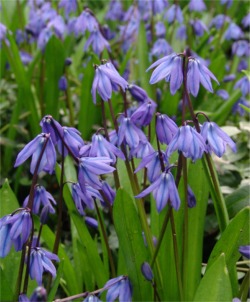 A bulb dibble or dibber often has measurement markings for planting depth accuracy, has a simple wooden handle and a pointed, graduated steel or wooden spike. The spike pokes a hole in the soil, making way for the small bulb. Soil should then be pushed over and around the bulb, removing any air pockets or indentations. Other bulb dibbers or dibbles may have a larger handle atop an open tube with a serrated cutting edge that is turned into the soil, to pull out a tube full of soil. Once the bulb is planted, the removed soil core should be replaced, with any air pockets or planting indentations removed.
A bulb dibble or dibber often has measurement markings for planting depth accuracy, has a simple wooden handle and a pointed, graduated steel or wooden spike. The spike pokes a hole in the soil, making way for the small bulb. Soil should then be pushed over and around the bulb, removing any air pockets or indentations. Other bulb dibbers or dibbles may have a larger handle atop an open tube with a serrated cutting edge that is turned into the soil, to pull out a tube full of soil. Once the bulb is planted, the removed soil core should be replaced, with any air pockets or planting indentations removed.
 For larger bulbs in prepared beds, one may choose from short-handled bulb planters and planting or transplanting trowels, and shovels of all sizes, shapes, lengths and degree of pointyness. These tools would be used while kneeling in the soil, hopefully on a foam garden mat or while wearing garden knee pads. There is nothing worse than kneeling on a yet-to-be-discovered stone. If kneeling and planting, it is a good idea to wear flexible shoes for balance and comfort. Garden gloves are always a good idea.
For larger bulbs in prepared beds, one may choose from short-handled bulb planters and planting or transplanting trowels, and shovels of all sizes, shapes, lengths and degree of pointyness. These tools would be used while kneeling in the soil, hopefully on a foam garden mat or while wearing garden knee pads. There is nothing worse than kneeling on a yet-to-be-discovered stone. If kneeling and planting, it is a good idea to wear flexible shoes for balance and comfort. Garden gloves are always a good idea.
If you intend to stand while digging bulb planting holes, there are long-handled trowels, shovels and bulb planters as well as bulb augers that may be fitted to standard electric or cordless drills. One should wear more sturdy, protective shoes with stronger, harder soils. If a bulb auger is to be used, safety glasses should also be worn.
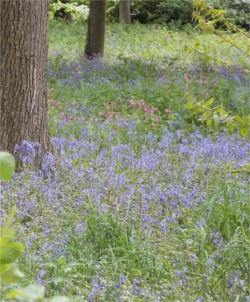 If flower bulbs are to be planted in a spot where the soil has not been well-worked, a good, strong garden shovel with a pointed tip can be used. Individual or large central bulb planting holes may be dug with the soil loosened 3" beneath the planting depth. We do not recommend using a bulb augur in unprepared beds or woodlands due to rocks and root systems. Plus, an augured hole in densely compacted earth may fill with water without adequate water drainage.
If flower bulbs are to be planted in a spot where the soil has not been well-worked, a good, strong garden shovel with a pointed tip can be used. Individual or large central bulb planting holes may be dug with the soil loosened 3" beneath the planting depth. We do not recommend using a bulb augur in unprepared beds or woodlands due to rocks and root systems. Plus, an augured hole in densely compacted earth may fill with water without adequate water drainage.
After all bulbs are planted, it is a good idea to go through the bed with a short-handled or long-handled garden cultivator or scratch to smooth out the soil and remove any planting hole indentations. Then, walk over the bed to tamp it down. This is good for even water drainage.
Make sure that the tools you choose are strong and durable. To avoid losing your favorite tools in the garden, you may want to paint the handles a bright contrasting color when you clean them and put them away for the winter.



